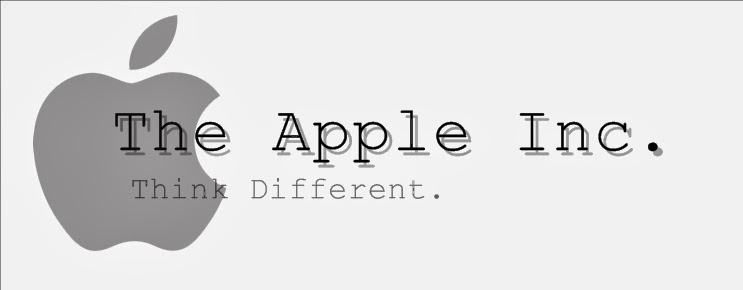Apple Inc.
Apple Inc., also formerly known as Apple
Computer Incorporated which is named by Steve Jobs in 9 January 1977, it is a Multinational
Corporation which designs, distributes and develops electronic gadgets such as
computer applications, smart phones and personal computers. Apple Inc. HQ is
located at the Cupertino, California in United State. Electronic gadgets like
iPhone, iPad, Macbook are the well-known gadget that introduce by Apple Inc. to
the world. Apple Inc. is the world’s second largest IT company with a total
revenue of USD$ 156.508 billion (Wikipedia,
2013). Apple Inc. was founded on April 1, 1976. On Sept 29 2012,
Apple Inc. had 408 retail stores in 14 countries as known as Apple Store and
iTunes Store, 72800 of fulltime employees and 3300 temporary fulltime employees
worldwide.
Moreover, Apple Inc. achieved a total of USD $156 billion worldwide annual revenue in 2012. Apple Inc. has an estimated value of USD$415 billion on March 2013 and became the largest publicly traded corporation in the world by its huge market capitalization. As we can from Figure 1 it shows that Apple Inc. made into top 6 largest publicly trade corporation in the world on 1st Quarter 2010, and become the top largest pubicly traded corporation in the world on the 1st Quarter of 2012 (Upload.wikimedia.org, 2013).
Figure 1
Moreover, Apple Inc. achieved a total of USD $156 billion worldwide annual revenue in 2012. Apple Inc. has an estimated value of USD$415 billion on March 2013 and became the largest publicly traded corporation in the world by its huge market capitalization. As we can from Figure 1 it shows that Apple Inc. made into top 6 largest publicly trade corporation in the world on 1st Quarter 2010, and become the top largest pubicly traded corporation in the world on the 1st Quarter of 2012 (Upload.wikimedia.org, 2013).
IPhone has become the most sold product that
created by the Apple Inc. and a totaled of 250millions of unit were sold in the
history of iPhone. The iPhone generated most of the revenue of Apple and also
listed as the most popular product of the company. Apple Inc (Mcginley, 2013).
Apple Inc has directly and indirectly created 307,205 U.S jobs across all 50
states in various numerous industries. These employees are included people from
different places like corning employees for the glasses of Apple’s gadget, engineers
which manufacture the processors. Moreover, the app company generates 291,250
jobs thus Apple Inc. generated total of 598500 jobs for US.




